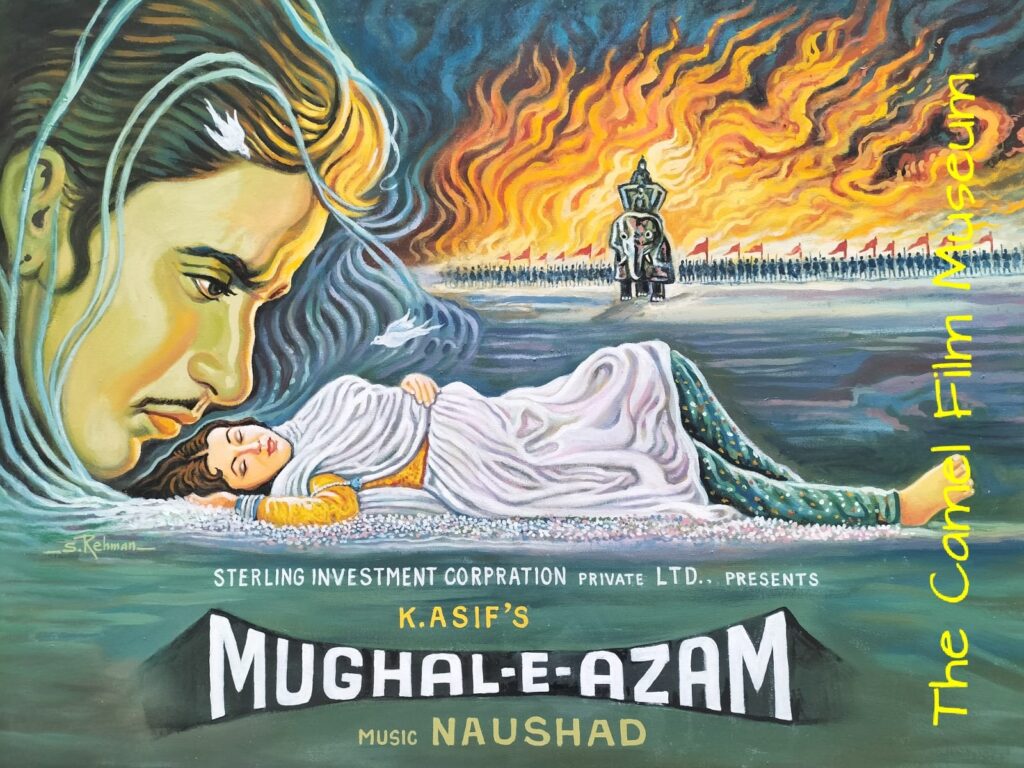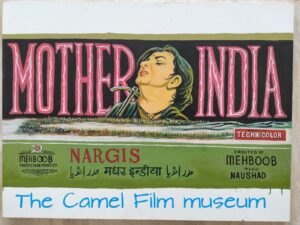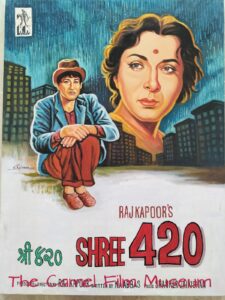We at The Camel Film Museum believe not only that we should preserve our cultural heritage for posterity, but also that we must respect it from the bottom of our heart as our present and our future that is going to be shaped and moulded by the great treasure. Our cultural heritage is our history that has continued to inspire us over the years. Needless to say, Indian cinema has a major contribution in this treasure and has made it richer.
Hence our aim is to create awareness about our cultural heritage. The Camel Film Museum is determined to take up this noble cause wholeheartedly which has already resulted into a voluminous collection of artifacts with immense heritage value. In the most humble way, The Camel Film Museum has become a Film Archive.
The museum was launched by two persons Suresh Khetan and Nipa Shah who have devoted years to searching and sourcing all aspects of the Indian film industry, from the Silent Era to date. They have painstakingly gathered rare gems of collectibles. Since both the founders of the museum hail from Rajasthan/Gujarat, in a gesture of their loyalty they have decided on naming the museum after the “ship of the desert”: the camel!
As we all are aware, the entire world salutes our nation for having the biggest film industry, which produces the highest number of films to the tune of 1,200 films a year.
The medium of cinema came to India on 7th July 1896, within six months of its inception, which took place in Paris on 28th December 1895. In 1898, Harishchandra Sakharam Bhatvadekar, alias Save Dada, was the first Indian to venture into making of moving pictures as it was known then, who shot some routine events. There were a few other pioneers from Bombay (Mumbai), Calcutta (Kolkata) and Madras (Chennai) who attempted making moving images.
Later, it was Dadasaheb Phalke who landed the real world of cinema in 1913 by making India’s first feature film Raja Harishchandra, and it was the beginning of the industry which kept flourishing over the years and gained a respectable position for the Indian cinema. As we all know, the visionary filmmaker Dadasaheb Phalke is known as `The father of Indian cinema’.
Pioneers such as Dadasaheb Phalke and many others who played a vital role in shaping and contributing to the Indian cinema have left us a great treasure which is undoubtedly the heritage of the Indian cinema that makes us proud and also keeps inspiring and motivating the new generations. Therefore we must take utmost care to preserve this valuable heritage that has numerous stories to tell about our golden past!
The Film Archive, the most proud initiative of The Camel Film Museum, has taken great efforts and put in its entire energy in last twenty years to gather films, posters (printed & hand-painted), song-synopsis booklets, photographs, show–lobby cards, vintage magazines, books and so on. Sometimes, it was a next-to-impossible situation and many a times our efforts were frustrated, but the Camel Film Museum left no stone unturned and went ahead with its mission with great passion and enthusiasm and more than that, with immense respect for the heritage.
This is one of the most comprehensive Hindi film museums in the world, showcasing a wide variety of celluloid films and film memorabilia, as described below
Celluloid Films – We have housed around 8,000 Hindi films, which is the largest and rarest collection on the globe, including Jeevan Naiya (Bombay Talkies), Arab Ka Saudagar, Yahoodi ki Ladki, etc. Around 3,000 award-winning films of World Cinema apart from 200 dubbed films in Hindi are also kept in the Museum. All Celluloid Films are preserved on Hard Drives.
Posters – We have 15,000 rarest hand-painted and water-coloured original posters (including classics) in wooden box frames containing more than 3,000 titles. These include Mughal-e-Azam, Sholay, Mahal, Pyaasa, Guide and Kaagaz Ke Phool, to name a few.
Song Synopsis Booklets – We have around 18,000 song synopsis booklets with 8,000 film titles including Alam Ara (1931) the first Indian talkie film, rarest of the rarest. A lot of Silent Era booklets and handbills are also in our Museum.
Photographs/Lobby & Show Cards – Around 2,00,000 black & white photographs/lobby cards/show cards of classics (including some in the Marathi language) are also with us.
Vintage Magazines – Rare magazines such as Film India are also in the Museum.
Apart from these, there are countless vintage books signed by actors; hand-painted posters (oil paintings) by S. Rehman; handbills; journals; brochures; celebrity letters; original cinema advertisements; censor certificates; glass negatives of Mughal-E-Azam and many more film memorabilia ranging from the Silent Era until now are also in the bag of The Camel Film Museum.
Last but not the least, we have acquired the whole Indian Cinema Glimpse of 110 Years, which is next to impossible.
We have put our best foot forward to collect and to keep alive these memorabilia. In this roadless journey, many great writers, producers, actors, actresses and prominent personalities have made contributions, including top lawyers. Our sincere thanks for all of them.
We invite you to visit us and we shall be honoured to show you around. Kindly schedule your appointment with the Film Curator.
Feel free to keep in touch with us round the clock, and thank you deeply to all for your time.
From –
The Camel Film Museum
Suresh Khetan
+91 9820036750
khetansuresh@gmail.com



